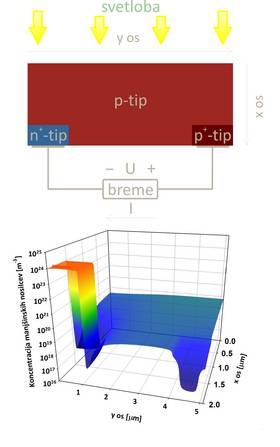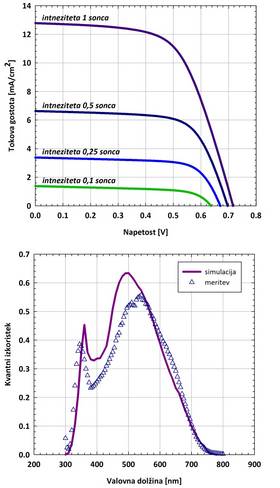^
Modelling of solar cells

In LPVO we have developed a computer program ASPIN2 that enables us to calculate the characteristics of solar cells in one or two dimensions. ASPIN2 is based on a verified drift-diffusion model with added models of thermionic emission and quantum tunneling. ASPIN2 also allows the inclusion of material inhomogeneites of polycrystalline solar cells. To calculate the optical generation profile SunShine optical simulator is used.
The figure shows a scanning electron microscope (SEM) scan of a CIGS solar cell (top). Based on the scan the simulated structure is determined (bottom). In describing the structure we take into account the inhomogeneities in the material due to the polycrystalline structure of the CIGS layer.
^
ASPIN2 example

To demonstrate the use of ASPIN2 we simulated pn-solar cell with contacts on the back side. Light is incident upon the cell in the positive direction of x axis (Light enters the cell at x = 0). The material, which absorbs most incident light is p-type. In the lower left corner the material is n-type and the pn-junction is formed. In the lower right side heavily doped p-type creates back surface field. The figure shows simulated structure (top) and simulation results showing the concentration of minority charge carriers, in this case the electrons (bottom).
^
Dye-sensitized solar cells

In LPVO we also model and simulate dye-sensitized solar cells. The physical principle of dye-sensitized solar cells is quite different from the cells with pn-junction and requires a different model. Figure shows the results of simulated current-voltage characteristics of dye-sensitized solar cells at different light intensities (top) and comparison between simulated and measured quantum efficiency (bottom).





